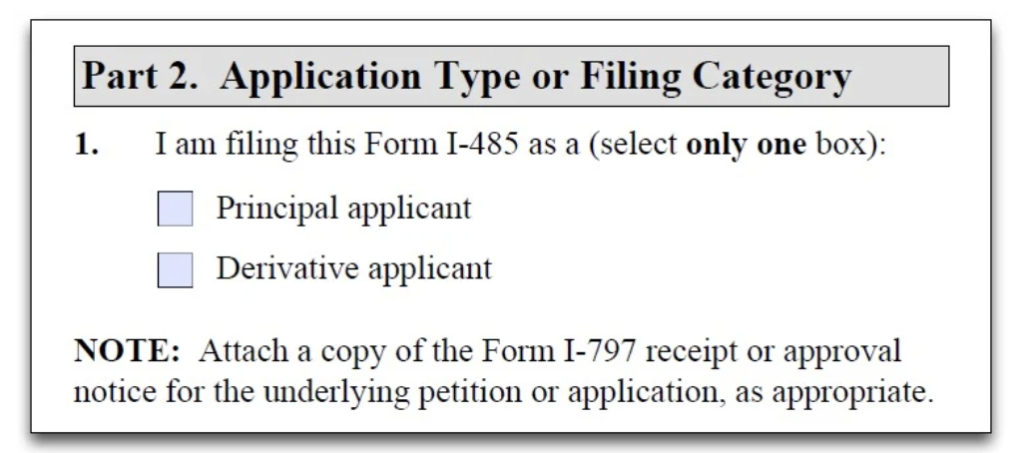Consular Processing or Adjustment of Status?
By Sharaque Khan
As an applicant for a green card, you will have to go through a multi-step process. Regardless, the final step in all green card petitions is choosing between Adjustment of Status or Consular Processing. Each option has its advantages and disadvantages. Therefore, you should consider them carefully before starting the green card process.
Requirements of Adjustment of Status
Physical Presence
You must be physically present in the United States when submitting the AOS application. You can only apply for Consular Processing if you are outside the U.S.
Admitted, Paroled, and in Valid Status
Your entry into the U.S must be lawful, which means that at the time of your arrival to the U.S, an immigration officer should have admitted you at the airport or a port of entry and promptly issued you an I-94 card. Notably, most individuals now receive electronic I-94 cards.
Following lawful entry, you must have maintained a nonimmigrant status in most cases. Unlawful work or overstaying your admission period will render you ineligible for Adjustment of Status unless you are an immediate relative of a U.S citizen.
Immigrant Visa Immediately Available
One of the first steps in a green card process is filing for I-130 or I-140 petition. Once this petition is approved, you can proceed to the Adjustment of Status stage. However, your priority date should be current before reaching this stage unless you are an immediate relative of a U.S. citizen. As an immediate relative of a U.S. citizen, you will not have to wait for your Priority Date to be current; you may file for the I-130 petition and Adjustment of Status applications simultaneously. Similarly, as an Employment-based applicant, you may file the I-140 and Adjustment of Status (I-485) applications simultaneously if your Priority Date is current.
You can verify your Priority Date on the Visa Bulletin published by the Department of State at: https://travel.state.gov/content/travel/en/legal/visa-law0/visa-bulletin.html. Additionally, you can get more information on the Visa Bulletin in my podcast “How to read a visa bulletin.”
Admissible to the United States
Applicants for Adjustment of Status must be admissible to the United States. (For more information on who is not admissible, check my article labeled “inadmissibility”).
Steps for Adjustment of Status
First, your sponsor will file the I-130 petition for Family-based immigration or I-140 petition for Employment-based immigration. The approval of these petitions establishes the relationship between the sponsor and the beneficiary; it does not provide any immigration status or benefit.
For Family-based immigration, you will also need to have your financial sponsor complete Form I-864, Affidavit of Support. A financial sponsor removes a new immigrant’s need to rely on public benefits. Therefore, if the new immigrant uses certain public benefits like food stamps or Medicaid, the agency providing the benefits may require the financial sponsor to pay for these services.
Most categories require you to have an approved immigrant petition before filing for Adjustment of Status. However, as mentioned above, immediate relatives of U.S citizens can file both applications simultaneously.
Second, after your application for Form I-130 is approved, you must file Form I-485, Application to Adjust Status. Two types of applicants may apply for Adjustment of Status: principal and derivative applicants. The beneficiary of an immigrant petition is called the principal applicant. Derivative applicants are the family members of the principal applicant. Both the principal and the derivative applicant must designate which immigrant category he or she is applying under by selecting the appropriate box listed on Form I-485, Part 2.

Each application must include the appropriate filing fee and biometric service fee (if applicable). In addition, at the time of filing, you must submit the required evidence and supporting documentation. You can find more information on the evidence and supporting documentation on the USCIS website in the instructions section for Form I-485.
Third, after USCIS receives your application and confirms its accuracy and completeness, it will mail you a notice for your biometrics services appointment at a local Application Support Center (ASC). This notice will include the date, time, and location of your appointment. ASC will collect your fingerprints, photograph, and signature at this appointment.
Fourth, USCIS will schedule you (and your family members if applicable) for an interview. You must bring originals of all documentation submitted to the USCIS with Form I-485. The originals should include a passport, official travel documents, and Form I-94.
Note: If you change your address, you must inform USCIS within ten days of moving to the new address.
Consular Processing
Physical Presence and More
You should choose Consular processing if you:
- Reside Abroad,
- are ineligible to apply for Adjustment of Status, or
- elect not to adjust status.
Consular processing is mainly fulfilled by the Department of State (DOS), National Visa Center (NVC), and the immigrant visa sections at U.S consulates or embassies.
National Visa Center (NVC) and the Consulate
After USCIS approves your I-130 petition, it will transfer your case to NVC for pre-processing. Once NVC receives this information, it will create your case in its system and send you a welcome letter. With the information in the letter, you can log in to the Consular Electronic Application Center (CEAC) and manage your case.
First, you will log into your case in CEAC and click the “Pay Now” button under the Affidavit of Support Fee or IV Fee on your summary page to make your payment. You will only be able to proceed to the next step after making the payment.
Second, you will have your financial sponsor complete Form I-864, Affidavit of Support, and submit an IRS tax transcript or tax return along with Form W-2. A financial sponsor removes a new immigrant’s need to rely on public benefits. Therefore, if the new immigrant uses certain public benefits like food stamps or Medicaid, the agency providing the benefits may require the financial sponsor to pay for the services.
Third, you will complete the Online Visa Application (DS-260) and upload the supporting documents to support your visa application.
Fourth, NVC will review your submitted documents for accuracy. When NVC determines your documents to be complete and correct, it will schedule a Green Card interview appointment with the appropriate consulate or embassy and send you and your attorney an email containing a notice of the appointment date and time.
Fifth, you will schedule and complete a medical examination after receiving the appointment notice from the NVC. A Panel Physician must conduct this exam. A Panel Physician is a doctor whom the embassy has approved. The medical examination will include a medical history review, chest X-ray and blood tests of syphilis, any required vaccinations, and physical examination. The physical examination will consist of examining the eyes, ears, nose, throat, heart, lungs, abdomen, lymph nodes, and skin.
Finally, on the scheduled date and time of your interview appointment, you will go to the U.S Embassy or Consulate with your printed DS-260 confirmation page, where a consular officer will interview you and your family. The interview appointment letter will name all traveling applicants required to participate.
Differences between Adjustment of Status and Consular Processing
Location
Inside the U.S, you can choose between Adjustment of Status and Consular Processing. Although, outside the U.S, you can only petition for Consular Processing.
Attorney at interview
At Adjustment of Status interviews, USCIS permits attorneys to accompany their clients. However, at Consular Processing interviews, consulates do not allow attorney presence.
Documents
When applying for Adjustment of Status, you can apply for Employment Authorization Document (EAD). This document will allow you to work in the U.S as the USCIS processes your application. Additionally, you may apply for a social security number once you have received the EAD. Furthermore, if you wish to travel outside the U.S during your application process, you may apply for an Advance Parole document; without this document, you will not be able to renter the U.S. In contrast, these documents are not available to you for consular processing.
Processing Time
Processing time varies for each application; it takes an average of 8-14 months to get a decision for Adjustment of Status and about 5-12 months for Consular Processing. However, Covid 19 has extended these times significantly.
Switching from Adjustment of Status to Consular Processing
If you want to convert from Adjustment of Status to Consular Processing, you will file Form I-824, Application for Action on Approved Petition, after the approval of Form I-130 or I-140.
Switching from Consular Processing to Adjustment of Status
If you want to convert from Consular Processing to Adjustment of Status, you will notify USCIS of the intent to change. The USCIS will send a letter acknowledging the change and requesting confirmation of the new choice of Adjustment of Status. NVC will cancel the Consular processing and transfer your file to the appropriate USCIS service center. However, this process will add several months to the processing time.
Fees
Presently, the government filing fee for Adjustment of Status is $1,760. Similarly, the government filing fees for Consular Processing is 1,200.
Conclusion
Consider using Adjustment of Status if you live in the United States and qualify for adjustment of status. Comparably, consider using consular processing if you live outside the United States
